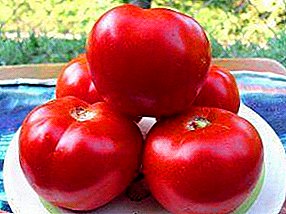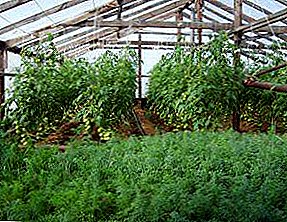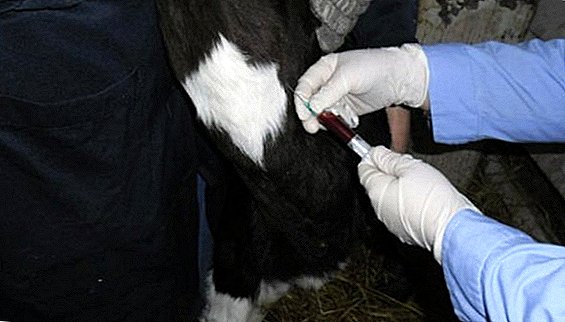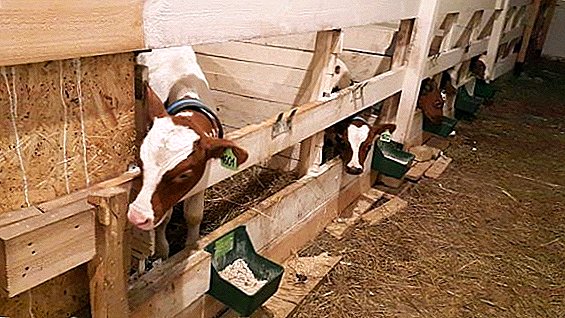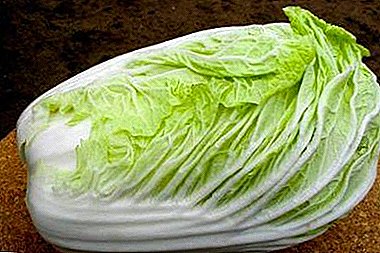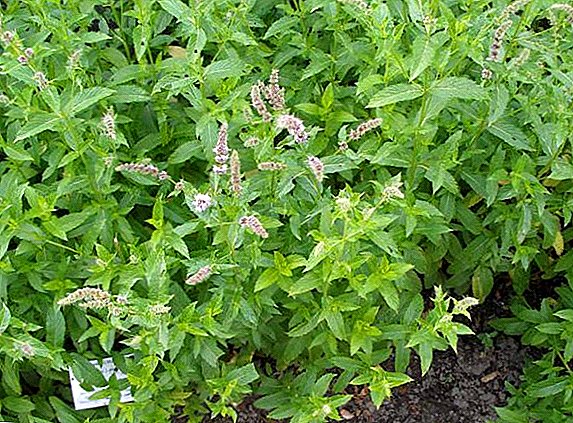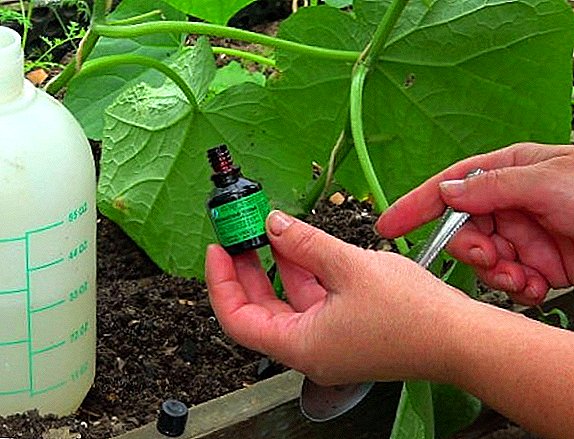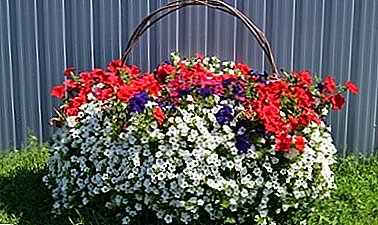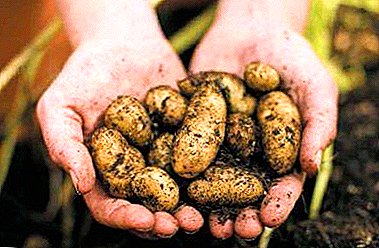
Early potatoes! Who does not attract it in the market at the end of May - the beginning of June? Very expensive, but you need to take a few tubers in order to at least partially quench your thirst for this seductive gourmet.
Early potatoes today are loved by many gardeners. And their choice is completely justified, because young tubers are a real delicacy, in which the content of vitamins is 3 times higher than in old potatoes. And although it is rather troublesome to grow such a product, but as they say, the end justifies the means.
Features of early ripening potatoes
Early potato varieties are distinguished by their short growing season, which is 40-50 days. Early potatoes begin their active growth as soon as the temperature of the earth reaches 10 ° C. And after flowering, the harvest is ready for assembly.
Top Grades
- Alyona - table potato variety, having a yield of 170 to 190 kg per one hundred square meters of land. Tubers of an oval form, light red color. Their weight is about 80-150 grams.
- Luck - valued for its good keeping quality. She has a relatively high yield, about 1.5 kg from one bush. Nodules of an oval form, light yellow color, their weight is from 125 to 250 grams.
 Karatop - A high-yielding variety of early potatoes, up to 500 kg can be harvested from one weave. The shape of yellow tubers is oblong-oval, weight about 130 grams. Resistant to diseases: late blight, cancer.
Karatop - A high-yielding variety of early potatoes, up to 500 kg can be harvested from one weave. The shape of yellow tubers is oblong-oval, weight about 130 grams. Resistant to diseases: late blight, cancer.- Kamensky - high yield, about 180 kg per hundred. Its red, elongated tubers are small, not more than 100 grams. Not afraid of viral diseases and the Colorado potato beetle.
- Romano - unpretentious to the soil variety, hardy to drought. High yield - up to 430 kg per hundred. Tubers are oval, reddish, weighing 80-100 grams.
- Gala - has a very high yield, up to 600 kg per hundred. The variety is well grown in many regions of Russia, unpretentious and resistant to diseases. Yellow, round tubers weighing from 70 to 120 grams.
- Nevsky - the most popular variety of early potatoes. Productivity from 370 to 500 kg. Resistant to disease. It grows well in all conditions. It has very beautiful, round and smooth fruits of yellow color.
- Red scarlett - high-yielding (up to 600 kg per hundred) grade. Suitable for almost all regions of Russia. Large red fruits with yellow flesh. Potatoes mass from 80 to 110 grams.
The necessary conditions
For planting early potatoes and subsequent care they will need the following tools and materials:
- shovels;
- rake;
- hoe;
- sticks;
- string and marking line;
- polyethylene film;
- agrofibre.
Preparatory work before planting early potatoes on the site should begin in the fall.
- To begin with, the soil must be carefully dug 20-25 cm deep.
- After that, fertilize. Many gardeners prefer to use fresh manure, which over the winter pereperet and give the earth all the nutrients.
- In mid-March, it is necessary to germinate the tubers of the early potato, selected for planting. To do this, they are placed in wooden boxes in a warm room with a temperature of +20 to 25 ° C.
Planting can begin after the appearance of the first shoots on the tubers. As a rule, this occurs one month after the start of germination.
How to grow?
Early potatoes are grown in two ways: under plastic wrap and agrofibre. Cultivation methods are very similar to each other and differ only in some nuances. Consider step by step the main technologies of cultivation.
Read how to grow potatoes from seed here, and in this article you will learn about new, non-traditional, ways of planting potatoes in the garden.
Under the agrofiber
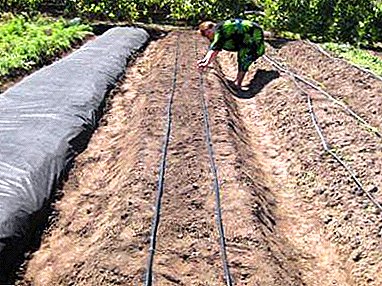 Using a rake or hoes, carefully loosen the beds. The soil should be soft and loose, without lumps.
Using a rake or hoes, carefully loosen the beds. The soil should be soft and loose, without lumps.- Insert 2 sticks connected to each other with twine on one side of the bed. On the other side also stick 2 sticks with twine of the same length. In this way, you can mark the boundaries of planting potatoes. Then rope all 4 sticks together to make a clear rectangle.
- Create in the ground with a hoe several parallel furrows for planting, 10-15 cm deep. In order for the plants to develop properly in the future, the distance between the furrows should be about 30 cm.
- Pour evenly a small amount of ash into each groove, which will protect plants from pests and diseases.
- Plant sprouted potatoes at a distance of 10 cm from each other.
- Mix the humus with the soil and sprinkle them on top of the grooves with the planted potatoes. The soil should not be tamped in order not to damage the plants.
- After all these procedures, ready-made beds are covered with agrofibre. This should be done carefully, without pressing the material strongly to the ground, otherwise the bushes will not be able to fully grow. On the edges of the beds, agrofibre can be secured with bricks, but not very tightly.
- It will be possible to remove the shelter in 1.5 months, during which time the potato will sprout and will rest against the material with its young twigs.
Under the film
The step-by-step scheme for preparing the beds and planting potatoes is the same as that described above with agrofibre. There are only small nuances.
- Polyethylene film will protect planted tubers from cooling or sudden frosts. But it also should not be too tight, so that the sprouting potato seedlings do not break.
- Until the potatoes grow, they do not need ventilation. But the sprouts need fresh air intake, which cannot penetrate under the dense plastic film. Therefore, the shelter must be periodically removed for airing seedlings. And when young bushes grow up to 10-15 cm in height, it will be necessary to make small holes in the film for ventilation.
Care instructions
Soil loosening
The first loosening should be done with a hoe or an iron rake to a depth of only 2-3 cm. It is necessary to carry out this procedure after each watering, this will help the seedlings to receive the required amount of oxygen and accordingly develop faster. Also loosening destroys weeds.
But loosening should be done with great care, so as not to damage the sprouts and not accidentally pull the tubers out of the ground.
Hilling
 When young plants are strong enough and their height reaches 15-18 cm, you can begin a deeper loosening and hilling of the beds. With the help of the hoe, you need to pull up the ground on all sides to each potato bush in order to get a small mound.
When young plants are strong enough and their height reaches 15-18 cm, you can begin a deeper loosening and hilling of the beds. With the help of the hoe, you need to pull up the ground on all sides to each potato bush in order to get a small mound.
remember, that in hot and arid weather, loosening and hilling of potatoes should not be carried outBecause the soil will lose a lot of moisture because of this and it will dry out. In this weather, you can only slightly loosen the beds between the rows to a depth of no more than 5-6 cm.
But after a good rain, earthing up should be carried out regularly, so that the soil does not stand and breathe.
Watering
Watering early potatoes is necessary in the evening. If you water manually, then 1 watering can with water should be enough for 2-3 bush.
For information on when to irrigate potatoes and how to do it using the drip method, read our material.
Temperature
For proper development of tubers, the average temperature should be 18-22 ° C. At lower temperatures, tuberization slows down, and at higher temperatures, development can stop altogether.
Top dressing
Feeding up young early potatoes should be started during the growing season. To accelerate the growth and development of the tops under each bush of the potato poured half a teaspoon of urea and 200 grams of humus.
On how to grow potatoes properly, so that you have a good, rich harvest, as well as new technologies for producing large root crops, we described in this article.
- Where does the root vegetable come from and where is it most popular?
- What is potato under mulch? What materials are needed and how to land?
- Where and how are potatoes grown in Russia?
- How to make a business plan for growing potatoes?
Conclusion
The first harvest of early potatoes can be obtained in April. It is necessary to collect new potatoes after flowering, after the lower leaves begin to turn yellow on the bushes. After harvesting the first harvest, the beds slightly pile up and water.


 Karatop - A high-yielding variety of early potatoes, up to 500 kg can be harvested from one weave. The shape of yellow tubers is oblong-oval, weight about 130 grams. Resistant to diseases: late blight, cancer.
Karatop - A high-yielding variety of early potatoes, up to 500 kg can be harvested from one weave. The shape of yellow tubers is oblong-oval, weight about 130 grams. Resistant to diseases: late blight, cancer. Using a rake or hoes, carefully loosen the beds. The soil should be soft and loose, without lumps.
Using a rake or hoes, carefully loosen the beds. The soil should be soft and loose, without lumps.